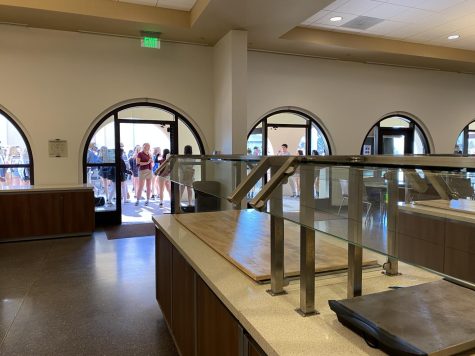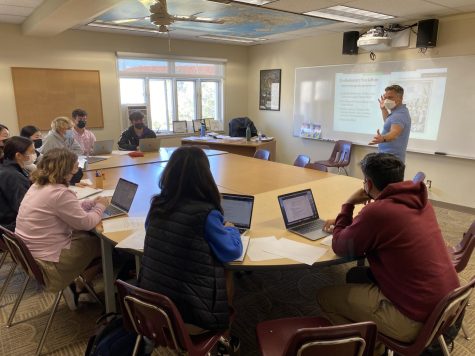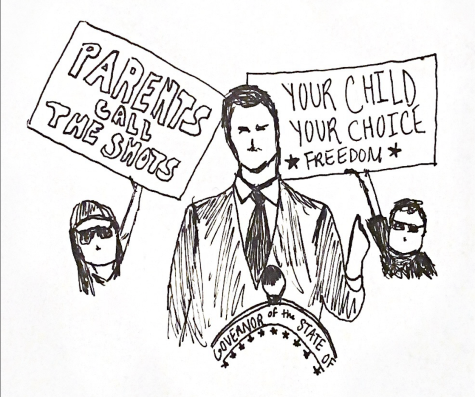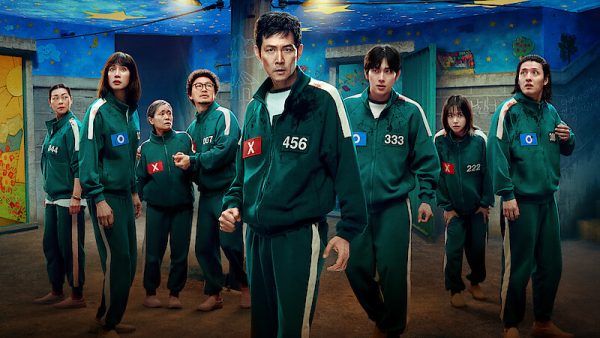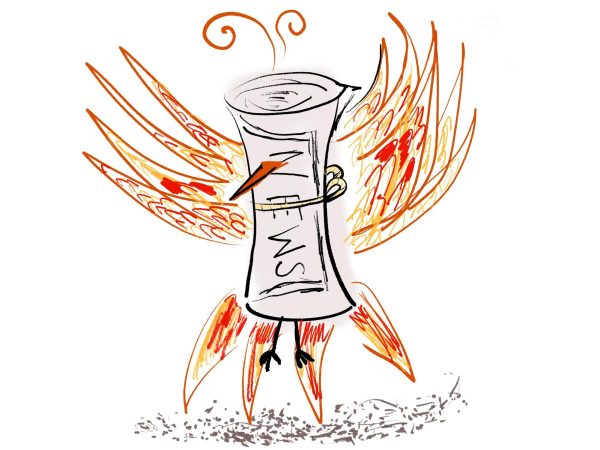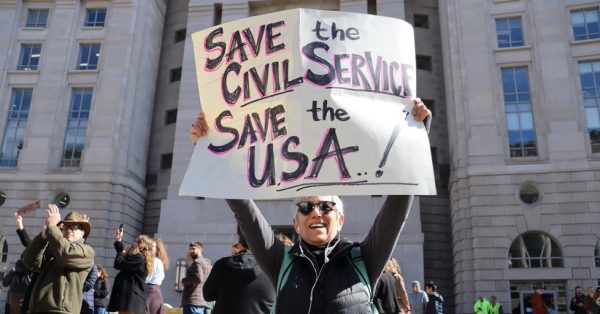Stay at Home, Save Lives
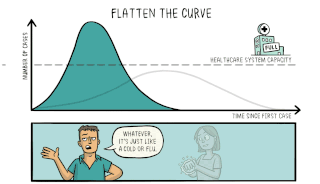
“Flattening the Curve” refers to the idea that if COVID-19 cases are spread out over a longer period of time, hospital capacities will not be overwhelmed and unnecessary deaths will be avoided.
The other day, while I was happily scrolling through my Instagram feed, in a desperate bid to avoid doing my homework, I stumbled upon a post of some of my friends hanging out captioned, “social distancing who?” Very cute. So quirky. Unfortunately, I don’t find the deliberate flouting of a life-saving preventative measure in a time of crisis quite so funny. I realize that by now, most people have grasped the severity of the situation and are staying away from other people, but if you’re one of those people still going out, this article is for you.
Despite the fact that there are fines and other deterrents in place, people are still leaving home for non-essential reasons. For example, in San Diego, people were still visiting beaches after social distancing mandates were put in place. According to NBC, on March 23, due to people failing to obey social distancing orders, San Diego county has been forced to close many of its beaches. County Public Health Officer Dr. Wilma Woten noted that initially “we wanted people to have the opportunity of walking on the beach while maintaining social distancing.” Unfortunately, due to the large number of people that were still congregating on beaches, our city was forced to take the drastic step of shutting down the beaches.
So, what could possibly drive people to ignore social distancing? The problem is not that people aren’t realizing the gravity of the situation; they just don’t realize how COVID-19 could affect them. There’s a meme going around calling COVID-19 the “Boomer remover.” Though this is a joke, it still holds problematic connotations for a couple of reasons. Obviously, Baby Boomers are not some abstract evil ruining the planet — they are our grandparents, teachers and our nation’s doctors. But, the label “Boomer remover” also creates this idea that COVID-19 only infects the elderly and that younger people will be totally fine. The assumption that the virus magically determines a person’s age and uses that to decide whether or not to infect someone doesn’t hold much water and you, the youth, are still at risk of infection.
According to The Guardian, a recent study from China proved that people under the age of 45 were just as likely to get infected compared to people over the age of 45. Looking at infection rates in the United States, according to the Center for Disease Control (CDC), of the Americans hospitalized for COVID-19, nearly 40 percent of them were under 55. More specifically, 20 percent have been between the ages of 20-44. However, these statistics, dire as they are, do not account for unreported cases. Dr. Christopher Murray, Chair and Professor of Health Metrics Sciences and Director of the Institute for Health Metrics and Evaluation at the University of Washington, stated that “We have grave concerns with overinterpreting the reported case rates because it’s very much a function of who gets tested.” In the United States, it is mostly older people being tested because testing is so limited. Furthermore, because younger people are more likely to have milder symptoms and thus, are less likely to need hospitalization, they are less likely to be tested. Murray noted that, “looking at the death data, what we do know is that the population death rate [in people] below age 50 is dramatically lower than 80 and older.” Basically, as a young person, you are equally likely to contract COVID-19, but if you do contract it, you are less likely to die from it. How’s that for a silver lining?
However, even if you remain asymptomatic, you can still be a vector, or a transmitter of the disease. COVID-19 is highly contagious, and according to a study by the University of Massachusetts, the mean incubation period is just over five days. That means it could be five days from the time you contract COVID-19 to when you see symptoms appear; that’s five days you could be wandering around infecting dozens of people. According to The Washington Post, COVID-19 is estimated to have a R0 or a R-naught of 2.38. This means that on average, a person with COVID-19 will infect 2.38 other people. While this seems insignificant, the principles of exponential growth means that a large segment of the population could be infected in a relatively short time.
More specifically, you could infect people who are at high risk during this period. According to the CDC, the elderly and those with serious underlying medical conditions are at “high risk for severe illness.” Some of these medical conditions include chronic lung disease or moderate to severe asthma because COVID-19 targets the lungs, so those with already compromised respiratory systems would be affected more severely. Additionally, serious heart conditions, being immunocompromised, a Body Mass Index (BMI) of 40 or over, diabetes, chronic kidney disease and liver disease are all factors that increase the severity of COVID-19. If you have none of these factors and the worst symptom you could contract is a mild fever, congratulations. Unfortunately, there are people that could die from COVID-19, and you could pass it on to them.
The final question is, why even bother? Is social distancing even going to do anything? Yes. According to CNN, New Zealand has been incredibly successful in keeping COVID-19 at bay. On Thursday April 9, New Zealand reported a grand total of 1239 cases and exactly one death. In contrast, on the same date, the United States had 459,165 cases and 16,570 deaths. By abiding by the principles of social distancing and instituting a month-long lockdown on March 23, New Zealand has not just flattened the curve – it has absolutely squashed it. For various reasons, our country has not been placed on a national lockdown. What that means is that it is now down to us, the regular ordinary people to follow the social distancing guidelines established by mayors and governors.
Japan has proven that just the willingness of individuals to stay home can be incredibly effective. According to an article by Time, due to post-war civil liberties enshrined in their constitution, the government has limited enforcement ability in regard to social distancing. Much like the United States, Japan has to rely on its constituents to voluntarily isolate themselves. Because 83% of respondents in a poll said that they were avoiding going to public spaces, Japan has under two thousand cases. All of this is despite the fact that Japan is extremely close to China and has been exposed to the virus longer than the United States.
On the flip side,look at Italy. Italy has failed to flatten the curve. The number of active cases of COVID-19 has reached a certain threshold that has crossed what its healthcare system is able to handle. An article by Yascha Mounk for The Atlantic “likens moral choices Italian doctors may face to the forms of wartime triage that are required in the field of ‘catastrophe medicine.’” People who did not have a high chance of surviving or those would only have a short life even if they did recover were triaged out of the system and they did not receive vital care. Instead, doctors and nurses are putting resources towards those who have higher chances of surviving. This is the fate that awaits us if we do not act selflessly and stay at home.
If you are unwilling to quarantine for your own sake, fine, so be it. If you believe that you will not contract COVID-19 or will make a speedy recovery, that is your prerogative. However, there are elderly, immunosuppressed or otherwise compromised people who are depending on you to stay at home. So for their sake, and the hope that our nation will not have to face the same crisis that Italy did, I urge you to stay at home.

Kasie Leung is a freshman staff writer for The Tower. When not writing manifesto-length articles, you can find her in Gilman-32 spending ungodly amounts...


